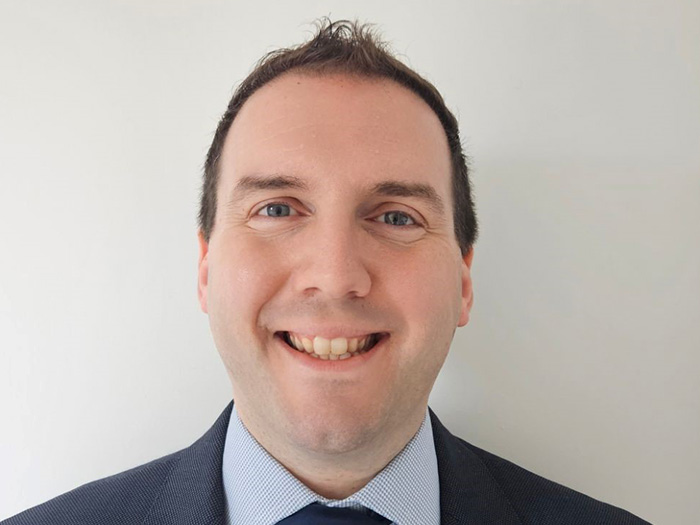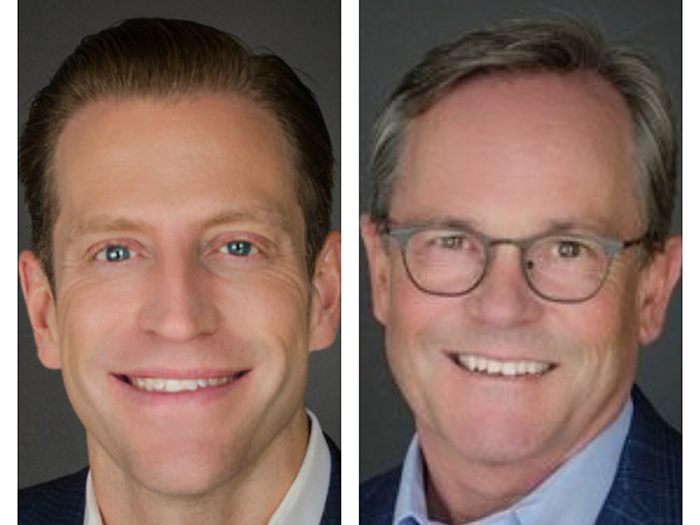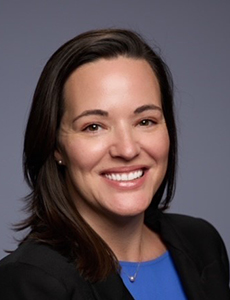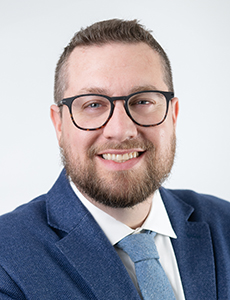Industry Awards
Health and Safety Success Requires Cultural Change

Dustin G. Richartz spends much of his time lately helping organizations develop the leadership necessary to drive health and safety within their companies.
The senior loss control consultant with Kansas City-based Lockton Companies, Richartz was recently awarded the 2015 Monsanto Queeny Safety Professional of the Year Award by the American Society of Safety Engineers for his work in developing safety and health programs.
Edgar Monsanto Queeny was president of Monsanto in 1947 when an explosion aboard a French freighter destroyed the company’s Texas City plant, killing 512 people, including 145 Monsanto employees. Queeny took the loss and devastation to heart and put greater emphasis on safety in the company’s operations. The company sponsors the Edgar Monsanto Queeny Safety Professional of the Year Award in his memory.
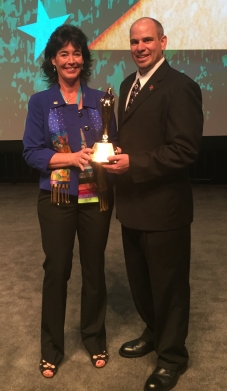
ASSE President Trish Ennis presents the SPY Award to Dustin Richartz, senior loss control consultant, Lockton Companies.
“It’s an extreme honor, as ASSE is one of the largest safety and health organizations with some 37,000 members globally,” he said. “To be recognized as safety professional of the year is a huge honor and one I definitely don’t take lightly.”
Richartz began his career in safety and health in the manufacturing industry and eventually joined the insurance side. He’s helped organizations create programs to keep their employees safe.
“A lot of time is spent on injury prevention programs, developing tools and techniques organizations can use to protect their workers,” he said. “Some are OSHA regulatory programs, and some are environmental programs; environmental evaluations to make sure organizations are adequately protecting their employees. It really is broad based. Safety and health is not just focused on one specific area. A lot of different things go into it.”
Cultural Shift
In the 15 years he’s been in the safety and health industry, Richartz has seen a change in focus. Keeping workers free of injury and illness now involves all aspects of an organization.
“One of the biggest changes I’ve seen with a lot of organizations, especially those more progressive, is a shifting away from safety and health being a regulatory entity and allowing it to be a component of the business operations and minimizing risk,” Richartz said. “For the first couple of years that was the way the profession was focused — on regulations and compliance rather than on risk mitigation.”
Part of the reason for the shift is because of what Richartz and other safety and health experts say are outdated regulations. Many of the OSHA mandates, for example, were developed in the 1970s and have not been updated to reflect changes in the workplace. Much more is necessary to fully develop an effective safety and health program.
“You’d start with the compliance. It really is a foundational piece,” he said. “Then you’d develop the cultural aspects, leadership that would really help drive the risk unit. So it’s not focused on just the foundation but building it up and integrating it in every aspect of the organization from the front line to your CEO.”
Changing the culture of an organization is not an easy or quick process. It requires the involvement and commitment of organizational leaders.
“Grassroots activities can help move the needle, but it really takes a senior executive to commit to hold their operations teams accountable to make the changes necessary,” Richartz said. “The middle managers influence the activities of the front line workers, but senior executives drive the overall culture.”
Where Richartz often sees companies making the necessary cultural change is in smaller businesses. “They are often more family run organizations,” he said. “Some businesses and industries may push back more than others. But as we see more and more attention placed on occupational safety and health, more organizations are understanding if they don’t do that it will impact their business in a negative way.”
Leadership Skills
Getting an organization to focus on safety and health requires strong leadership, Richartz explained. It’s an area that can be the key to preventing injuries and illnesses.
“It’s something I’m passionate about,” he said. “It really helps individuals and organizations move the needle, especially if they are stuck in the regulatory mindset. Focusing on developing middle and upper management to understand what it means to lead in safety and get more involvement and buy-in from their mid-level and front line employees. That’s where a lot of my time has been spent with clients and ASSE and other organizations.”
Leadership is one of the qualities that make for an effective safety and health professional, Richartz said. He mentors young people on developing that and other necessary skills.
“A big part is understanding that a lot of occupational safety and health is really based about people and developing soft skills necessary to influence change and influence individuals, not just try and direct but get them to buy into your ideas and thoughts,” Richartz said. “It takes time for you as a professional to develop those skills.”
With aging workers leaving the industry, safety and health professionals are focused on ways to attract new people. Richartz spends much of his time doing just that.
“One of the things I’ve done a lot of work with is partnering with [ASSE’s] Future Safety Leaders Conference Committee to really help develop leaders and invest in those educational programs that are out there to make sure students when they do come out understand the people side as well as the book side,” he said. “A lot of what we do is not just regulatory based … but focuses on the soft skill side.”
Among the changes he sees on the horizon is the trend to focus on the sustainability side of operations, especially for organizations in manufacturing processes and that have global suppliers.





